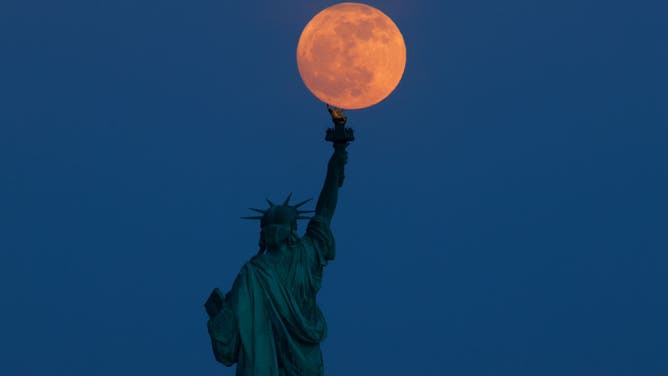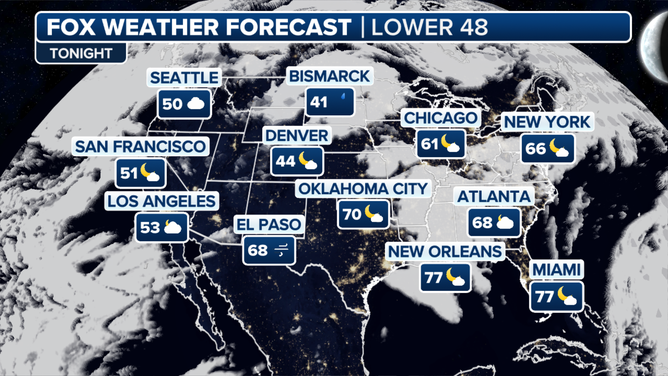Flower Moon: When you can see the last full Moon of spring
This full Moon is also known as the Corn Moon, Corn Planting Moon and the Milk Moon.
'Flower Moon' puts on incredible show around the world
File: May's 2023 Flower Moon put on a stunning show from New York to Kenya.
The last full Moon of spring, which is called the Flower Moon, happens Thursday night.
Actually, if we are splitting hairs, NASA put the official full Moon, its brightest point, at 9:53 a.m. Thursday. However, the author of NASA's Skywatching Guide, a retired NASA program executive, wrote that there is no need to rush.
"The Moon will appear full for about three days around this time, from Tuesday night through early Friday evening," Gordon Johnson wrote.
NASA astronomers did capture it at it's fullest, though.
WATCH OUT FOR THESE ASTRONOMICAL EVENTS IN 2024
Another treat for stargazers, the star Antares will be kissing the Moon.
"Thursday night the bright star Antares will appear so close to the Moon that for the Washington, DC area, the Moon will pass in front of Antares, blocking it from view, although the brightness of the full moon will make it difficult to see the star vanish behind the Moon," Johnston wrote.
May's full Moon is called the Flower Moon. The Maine Farmer's Almanac started publishing Native American names for the full Moon in the 1930s, and Flower Moon stuck, according to NASA. The Algonquin tribes named it for the abundant flowers at this time of year across the northeastern U.S.
SEE IT: AMERICA'S TOTAL SOLAR ECLIPSE WOWS CROWDS FROM BORDER TO BORDER

Here is the "full" Flower Moon as it rose behind the Statue of Liberty at twilight in New York City on May 22, 2024, as seen from Jersey City, New Jersey.
(Gary Hershorn / Getty Images)
THE WHITE HOUSE WANTS TO GIVE THE MOON ITS OWN TIME ZONE
Another Native American name for the May stunner is the Corn Moon or Corn Planting Moon. Per the name, it occurs during the time of year when farmers plant corn.
The old English name for the May full Moon is the Milk Moon.
"In 703 AD the English monk St. Bede the Venerable wrote that what we now call May was the ‘Three-Milkings Month,' apparently because this was the month when cows could be milked three times a day," commented Johnston.

Sky conditions Thursday night for Flower Moon viewing.
(FOX Weather)
Of course, seeing the Moon depends on the weather. According to the FOX Weather Center, Mother Nature is smiling on those of you in the interior West, Four Corner States and the central and southern Plains. Clouds could be an issue for the northern Plains, mid-South and Appalachia.
The next full Moon will be the first one of summer. The Summer Solstice is officially at 4:51 p.m. EDT June 20. That is also the day with the longest period of sunlight – 14 hours, 53 minutes, 42.5 seconds, according to Johnston. The full Moon occurs the next day at 9:08 p.m. EDT, but Johnston said most calendars list the full moon on June 22. Again, it will be visible for about three days.
